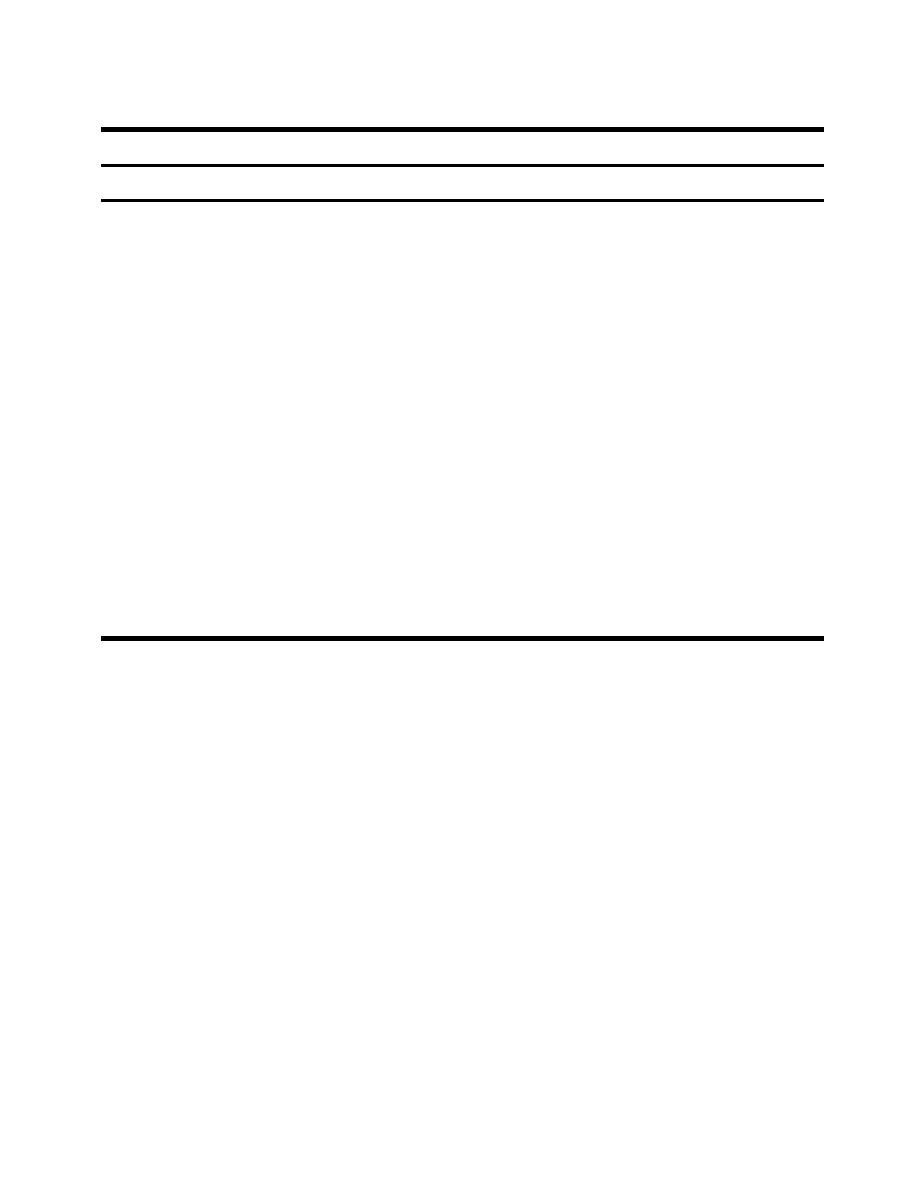
EI 02C097
01 Jul 97
Table C-2 (Concluded)
Line
Parameter
Description
11
Input data for maximum skin friction as a function of depth
NCC
Total number of maximum skin friction terms to input, <12; program interpolates maximum skin friction
between depths
11a
FS(N)
Maximum skin friction f-, for point N, psf
11b
ZEPP(N)
Depth for the maximum skin friction for point N, ft
11c
NCUR
Number of the shaft load-transfer curve input M in line 10; applicable to the maximum skin
friction for point N (Repeat 11a, 11b, 11c for each N = 1,NCC)
12
Input data for shaft elastic modulus as function of depth; program interpolates the elastic modulus between
depths
NC
Total number of terms of elastic modulus and depth, > 1
12a
EP(M)
Elastic modulus of shaft at point M, psf
12b
ZEP(M)
Depth for the elastic modulus of shaft at point M, ft (An elastic modulus and depth term are required at
least at the top and bottom of the shaft)
13
Input data for base displacements if K = 6 (The number of input terms or R(M) and S(M) equals IJ -1,
line 2
13a
R(M)
Base displacement, in. (The first displacement is 0.0 inches and already input in the program)
13b
S(M)
Base load for displacement R(M), pounds; the base load for 0.0 displacement is approximated as the
overlying soil weight and already input in the program
14
Structural load, pressure on adjacent soil at the ground surface, and depth of the active zone for heave
input for each problem for evaluation of specific load distribution-placement computations
14a
STRUC
Structural vertical load on top of shaft, pounds
14b
SOILP
Pressure on top layer on soil exerted by surrounding structure, fill, etc., psf
14c
XA
Depth of the active zone for heave, ft; = 0.01 yields load-displacement behavior for zero soil movement; a
saturated soil profile is assumed when comp uting soils movement; < 0.0 program goes to line 15 below
15
NON
Execution stops if 0; program goes to line 1 if > 0
(Sheet 3 of 3)
(1) The program is set to consider up to a total of
(2) Load-depth data for a given applied load on the pile top are
40 soil types and 100 soil elements. Figure C-1 provides
placed in file LDSP.DAT for plotting by graphic software.
and example layout of soil types and elements used in
AXILTR.
(3) Displacement-depth data for a given applied load on the
pile top are placed in file MDEP.DAT for plotting by graphic
(2) The program can accommodate up to 18 points of the
software.
load-displacement curve. This capacity may be altered by
adjusting the PARAMETER statement in the program.
C-2. Application
(3) The input data are placed in a file, "DALTR.TXT."
The pullout, uplift, and downdrag capabilities of AXILTR
These data are printed in output file, "LTROUT.TXT,"
are illustrated by two example problems. The accuracy of
illustrated in Table C-3a.
these solutions can be increased by using more soil layers,
which increases control over soil input parameters such as
swell pressure, maximum past pressure, and shear strength.
AXILTR are printed in LTROUT.TXT illustrated in
Table C-3b. Table C-3c provides a description of calcula-
a. Pullout and uplift. Table C-4 illustrated input data
tions illustrated in Table C-3b.
required to determine performance of a 2-feet-diameter
drilled shaft 50 feet long constructed in an expansive clay
(1) Load-displacement data are placed in file
soil of two layers, NMAT = 2. The shaft is underdreamed of
LDCOM.DAT for plotting by graphic software.
two layers, NMAT = 2. The shaft is underdreamed
C-4



 Previous Page
Previous Page
